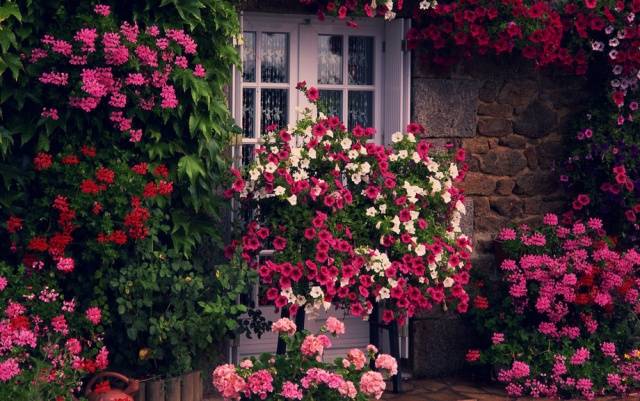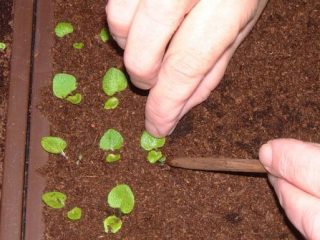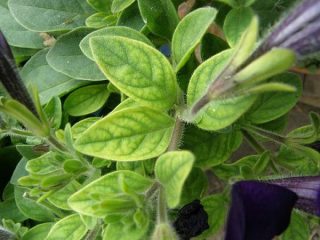Content
If you have to paint a balcony/loggia or a garden plot, we suggest you do this with the help of petunia. A variety of varieties and colors allows you to create a colorful picture on your site and balcony. The leaves of this flower are double and smooth, and the stems can be creeping, straight or flowing.
Like other plants, it happens that petunia sometimes gets sick. The first signs of a flower disease are yellowing and dryness of the leaves. Such a reaction may be the result of improper care, for example, due to a lack or excess of moisture or a lack of microelements. This article will talk about why petunia turns yellow and how to correct or prevent this phenomenon.
The first reason is violation of watering rules
Excess moisture leads to the appearance of root rot on the plant. As a result, the stem becomes soft and petunia leaves turn yellow. If the necessary measures are not taken, the rot will spread to the roots, causing the plant to die. Excess moisture leads to the development of fungal diseases.
To cure a plant you need to complete the following three steps:
- Remove the affected shoots and treat the cut areas with fungicides.
- Do not allow water to stagnate.
- Loosen the soil.
Petunias tolerate drought more easily than overwatering. After watering, a wilted plant quickly acquires a healthy appearance. However, with a chronic lack of moisture, petunias weaken as they lose their immunity. As a result, pests settle on the leaves and diseases develop.
Damage to powdery mildew and spider mites
Most often, petunia leaves turn yellow due to powdery mildew. This is a type of fungal infection. The reason for the development of the disease is a sharp change in the level of temperature and humidity during the growing of the plant.
A sign of powdery mildew is a whitish coating on the leaves. It is worth noting that fighting the disease requires effort. If petunia is grown at home, then the affected bushes should be transplanted into pre-steamed soil. The next condition is strict adherence to humidity and temperature conditions.
Excess nitrogen is also inappropriate in the soil in which petunia is grown. Whatever it is, yellow leaves always have a reason. In addition to powdery mildew, the flower can be affected by spider mites. This pest is most dangerous for cultivated plants.
Spider mites very quickly envelop not only the leaves of the plant, but also the stem with cobwebs, which cuts off access to nutrients. The reason for the appearance of mites is sometimes excessive dryness, most often high humidity.
If the petunia has stopped blooming, the leaves have turned yellow, and a cobweb has formed on the crown, then conduct a full inspection of the plant. Spider mites can be destroyed using special means.In addition, you can involve folk remedies in pest control. For example, you can prepare soapy water and spray the bush with it, or make a tobacco tincture for subsequent spraying. Petunias planted in open ground are more susceptible to spider mites, so as a preventive measure they can be pollinated with crushed sulfur.
Chlorotic yellowing
There are several provocateurs of chlorosis. Among them:
- Using hard water.
- Temperature violation.
- Lack of iron.
Hard water
Watering is carried out after the top layer of soil dries. To prevent moisture from stagnating in the ground, the soil should always remain loose. Settled, soft water is best suited for irrigation.
Temperature violation
If the temperature regime is disturbed when growing petunia, the leaves on it will first acquire a purple color, after which they will turn yellow. To minimize this problem, you need to spray the bush with ammonia dissolved in water (1 ml of alcohol per half bucket) or ammonium fertilizer.
Iron deficiency
Petunias are usually deficient in iron if they are grown in alkaline soil or in pots. To avoid chlorosis, plant petunias in acidic soil. Or, after planting, regularly acidify the soil.
Features of caring for petunia
If you want the bushes of the petunia you grow to be less sick, then water them once a day. The best time to water is in the late afternoon. To avoid the appearance of spider mites, in hot weather it is better to water the plant at dusk.If small dots appear on the leaves, this is a sure sign of excess moisture in the soil. In this case, it is better to stop watering the plant for several days. The soil needs to be loosened, so the roots will receive more oxygen.
If a crust has formed on the top layer of soil, then it’s time to resume watering the plant. At the same time, you need to feed it no more than 2 times a week. To activate the process of formation of new buds, you need to promptly remove wilted flowers. If you notice that the root of the plant has rotted, you should treat it with a fungicide as quickly as possible. In this case, the affected part of the stem must be removed.
This is due to the fact that the drops tear the petals apart, which is why the bush takes on a sloppy appearance. It may even stop blooming. If rain is expected, the petunias should be brought into the shelter in advance.
Generally speaking, petunia takes root well, so it is quite profitable to grow it at home. This beautiful flowering plant can decorate your area if you plant it along the fence. Juveniles take root well near petunia. Only to grow this plant you need to add gravel to the soil. Young people also love space.
So, petunia is an unpretentious, beautifully flowering plant that can be grown at home. The main thing is to properly care for it. The key to success is timely watering and stable temperature conditions during the process of growth and development.
Additionally, you can view video material on our website:

















